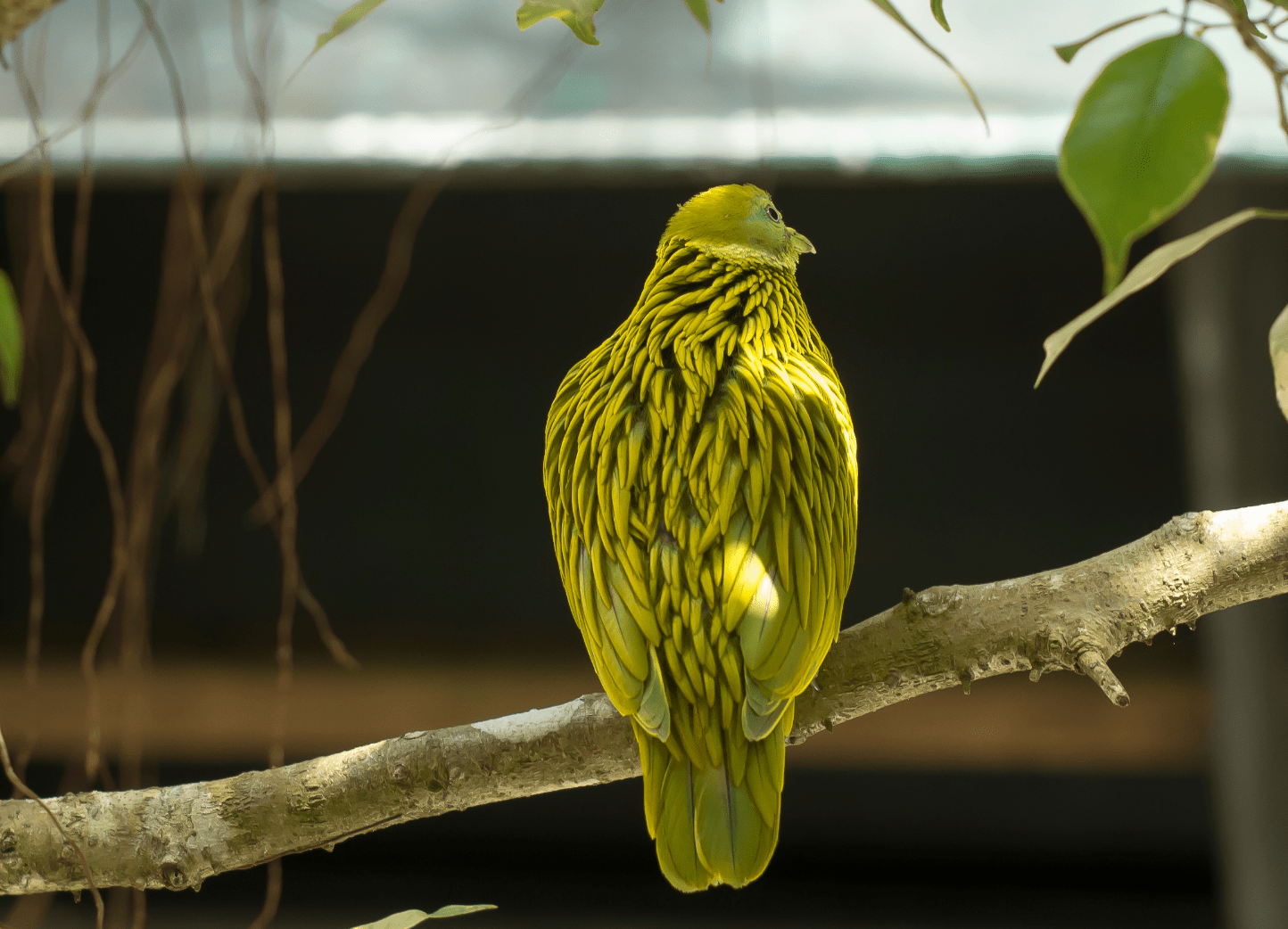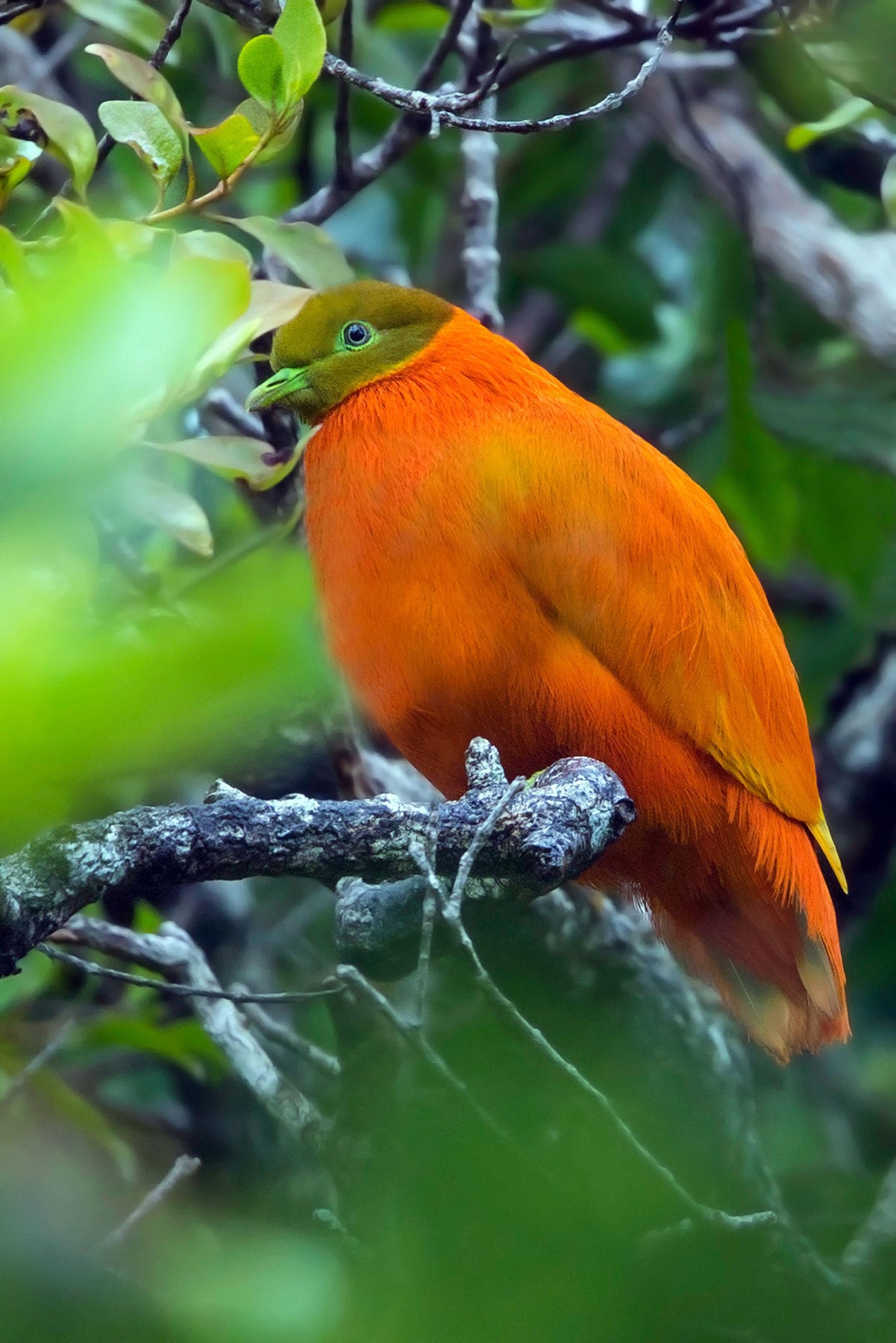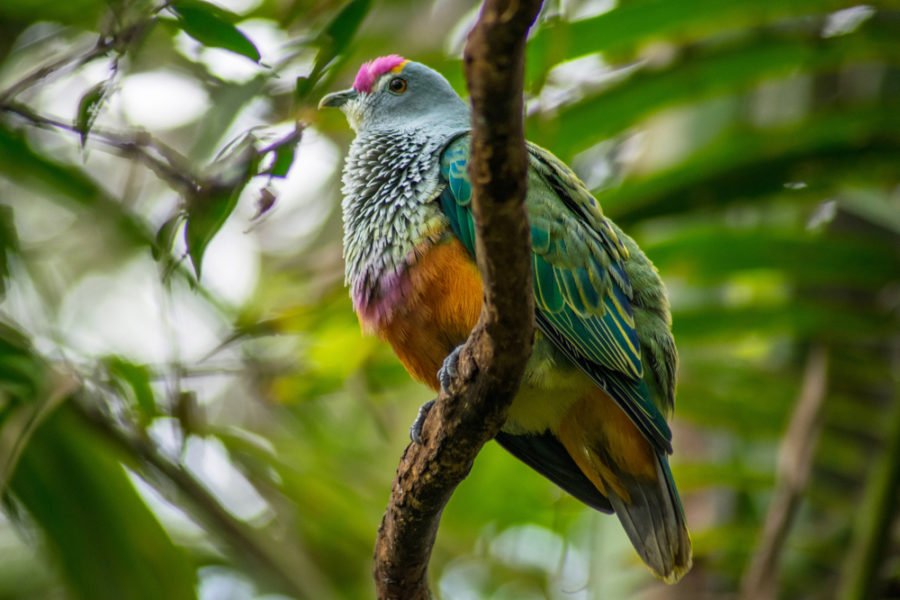The golden fruit dove looks like it belongs in a fairy tale

Bec Crew
Bec Crew

THE GOLDEN FRUIT dove is found only on the Viti Levu, Beqa, Ovalau, Gau, and Waya Group islands of Western Fiji.
Also known as the lemon dove, the golden fruit dove (Ptilinopus luteovirens) is not only brightly coloured – its plumage gives off an almost iridescent sheen.
Its feathers are so long and slender around the chest and wings, they give the appearance of a golden mane, fluffy and proud.
You can see this hair-like effect in the image below:

It really just makes you want to pet it.
The images above are of golden fruit dove males. The females and the juveniles are easily distinguished from the males because they’re more of a dark green colour.
The golden fruit dove belongs to the genus Ptilinopus, which has some 50 members spread across Southeast Asia and Oceania.
There are several species native to Australia, such as the rose-crowned fruit dove (Ptilinopus regina), found in the Kimberley, Arnhem Land, Cape York, and the coastal rainforests of NSW and Queensland, and the wompoo fruit dove (Ptilinopus magnificus) from eastern Australia.
Of all the 50-odd fruit dove species, the golden fruit dove and its closest relatives, the whistling fruit dove (Ptilinopus layardi) and orange fruit dove (Ptilinopus victor), are some of the most unique.
In fact, they are so similar to each other and different from the other species of fruit doves, scientists once considered separating them into their own genus, Chrysoenas.
Here’s the whistling fruit dove, endemic to the islands of Kadavu and Ono in Fiji, and here’s the orange fruit dove, resplendent in olive green and deep sunset colours:

The orange fruit dove has the widest range of all three species, found on the Fijian islands of Vanua Levu, Taveuni, Rabi, Kioa, Qamea and Laucala.
Also known as the flame dove, it doesn’t exactly fade into its surroundings:
Fruit doves might be some of the world’s most beautiful birds, but they’re not so far removed from the notoriously drab feral pigeon (Columba livia domestica).
They both belong to the same family, Columbidae (doves and pigeons), and share many of the same anatomical features. But when it comes to elegant splashes of colour, fruit doves won the genetic lottery.
Here are some pink-headed fruit doves (Ptilinopus porphyreus), native to Indonesia, showing off their gorgeous rose-coloured plumage:


